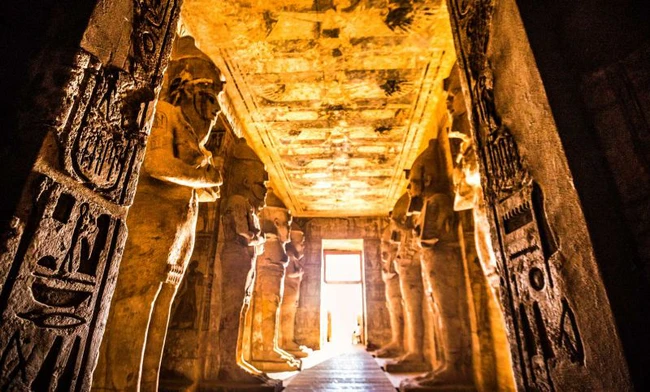The Abu Simbel temples, a monumental complex located in southern Egypt, stand as a testament to the grandeur and ingenuity of ancient Egyptian civilization. Carved directly into the sandstone cliffs on the west bank of the Nile River, these temples have withstood the test of time for over 3,000 years. Among their many marvels, the temples are renowned for a phenomenon known as the ‘Trial of Light,’ where the statue of Pharaoh Ramesses II is illuminated by the sun on only two specific days each year, while the statue of the god Ptah remains in perpetual darkness. This celestial alignment not only showcases the architectural prowess of the ancient Egyptians but also their profound understanding of astronomy and symbolism.
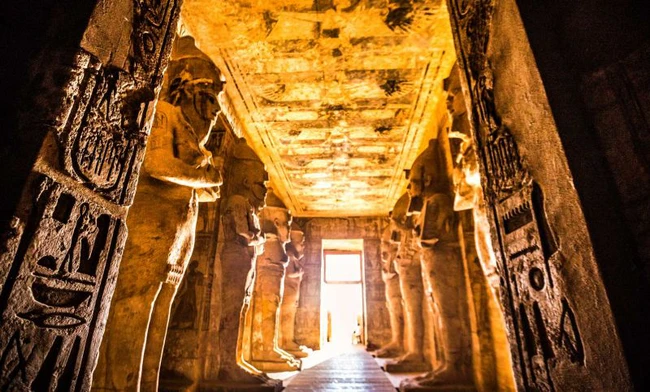
## The Grandeur of Abu Simbel: A Historical Overview
Constructed during the reign of Pharaoh Ramesses II in the 13th century BCE, the Abu Simbel temples were designed to impress and intimidate. The Great Temple, dedicated to Ramesses II himself, features four colossal statues of the pharaoh seated majestically at its entrance. These statues, each standing over 20 meters tall, symbolize Ramesses II’s divine status and his role as a mighty ruler.
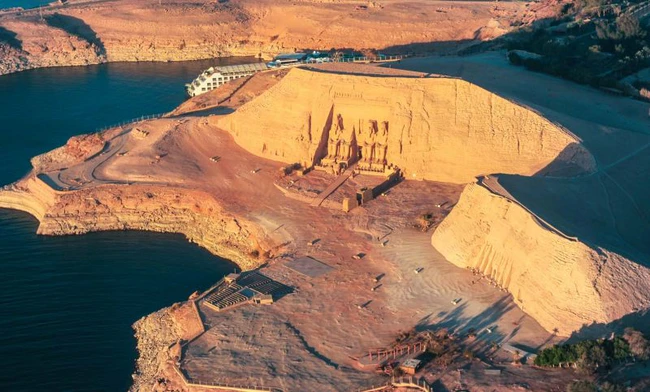
The interior of the Great Temple is equally awe-inspiring. The hypostyle hall, adorned with intricate carvings and towering pillars, leads to the sanctuary—a sacred chamber housing the statues of four gods: Amun, Ra-Horakhty, Ptah, and the deified Ramesses II. It is within this sanctuary that the ‘Trial of Light’ phenomenon occurs, captivating scholars and visitors alike.
## The ‘Trial of Light’: A Celestial Spectacle
The ‘Trial of Light’ refers to the extraordinary solar alignment that illuminates the sanctuary of the Great Temple on only two days each year: February 22 and October 22. On these dates, the rising sun’s rays penetrate the temple’s inner sanctum, casting light upon the statues of Amun, Ra-Horakhty, and Ramesses II, while the statue of Ptah remains shrouded in darkness.
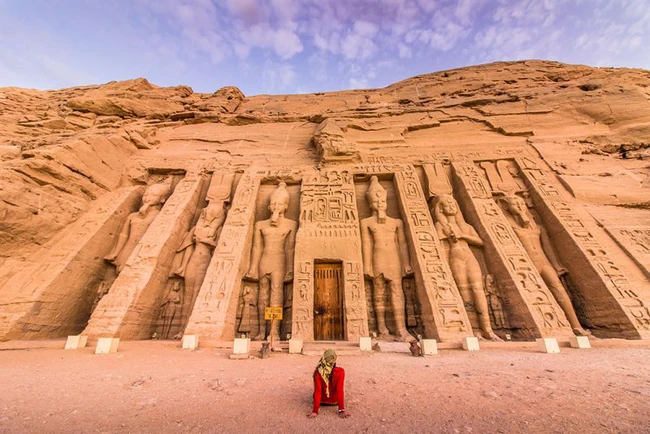
Ptah, the god of creation and the underworld, was believed to dwell in eternal darkness, a fitting contrast to the illumination bestowed upon the other deities. This precise alignment, achieved without modern technology, underscores the ancient Egyptians’ advanced understanding of astronomy and their ability to harmonize architecture with celestial movements.
## The Significance of the Dates: February 22 and October 22
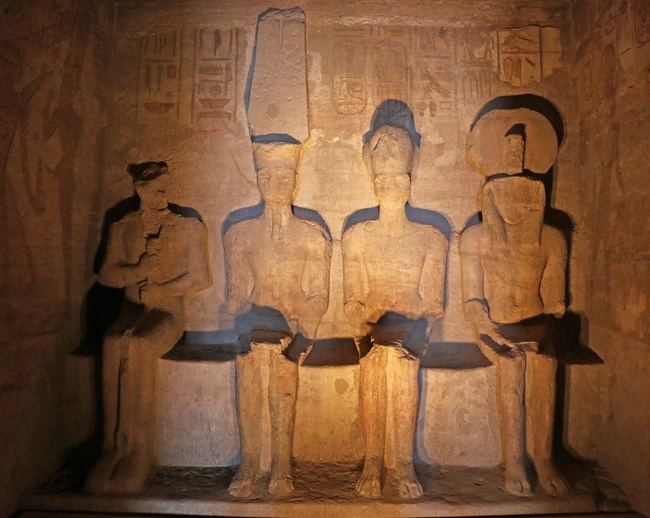
The selection of February 22 and October 22 is not arbitrary. These dates are believed to correspond to significant events in Ramesses II’s life, possibly his coronation and birth. By aligning the temple with these celestial events, the ancient Egyptians ensured that Ramesses II’s divine legacy would be eternally celebrated, reinforcing his god-like status.
## Architectural Genius: Aligning with the Sun
The precision required to achieve the ‘Trial of Light’ is nothing short of astounding. The temple’s architects and builders meticulously calculated the angles and positions necessary to direct the sun’s rays into the sanctuary. This involved a deep understanding of the solar cycle, the movement of the Earth, and the specific geographical location of Abu Simbel.
Modern engineers and archaeologists continue to marvel at this feat, acknowledging that replicating such an alignment today would be challenging even with advanced technology. The successful execution of the ‘Trial of Light’ speaks volumes about the ingenuity and sophistication of ancient Egyptian society.
## Preservation and Relocation: A Herculean Effort
In the 1960s, the construction of the Aswan High Dam threatened to submerge the Abu Simbel temples beneath the rising waters of Lake Nasser. In a remarkable international effort, the temples were meticulously dismantled and relocated to higher ground. This monumental task involved cutting the temples into large blocks, numbering and reassembling them with exact precision to preserve the original solar alignment.
The successful relocation of Abu Simbel stands as one of the greatest achievements in archaeological preservation, ensuring that future generations can continue to witness the ‘Trial of Light’ and appreciate the grandeur of ancient Egyptian architecture.
## The Eternal Darkness of Ptah: Symbolism and Mystery
While the statues of Amun, Ra-Horakhty, and Ramesses II bask in the sun’s glory twice a year, Ptah remains in eternal darkness. This deliberate design choice is laden with symbolism. Ptah, as the god of creation, craftsmen, and the underworld, embodies the mysteries of the afterlife and the unseen forces that shape existence. His perpetual darkness within the sanctuary serves as a reminder of the unknown and the sacred mysteries that lie beyond the realm of human understanding.
## A Legacy of Wonder and Inspiration
The 3,000-year-old Abu Simbel temples continue to inspire awe and wonder in all who visit. The ‘Trial of Light’ phenomenon, with its precise solar alignment and profound symbolism, stands as a testament to the architectural brilliance and astronomical expertise of ancient Egypt. It reminds us of a time when human creativity and the natural world were harmoniously intertwined, resulting in masterpieces that endure through the ages.
As we gaze upon the illuminated statues and contemplate the eternal darkness of Ptah, we are transported back to a civilization that revered the cosmos and sought to immortalize their legacy through stone and sunlight. The Abu Simbel temples, with their ‘Trial of Light,’ remain a shining beacon of human ingenuity and a timeless tribute to the grandeur of ancient Egypt.

